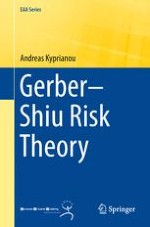2013 | Buch
Über dieses Buch
Motivated by the many and long-standing contributions of H. Gerber and E. Shiu, this book gives a modern perspective on the problem of ruin for the classical Cramér–Lundberg model and the surplus of an insurance company. The book studies martingales and path decompositions, which are the main tools used in analysing the distribution of the time of ruin, the wealth prior to ruin and the deficit at ruin. Recent developments in exotic ruin theory are also considered. In particular, by making dividend or tax payments out of the surplus process, the effect on ruin is explored.
Gerber-Shiu Risk Theory can be used as lecture notes and is suitable for a graduate course. Each chapter corresponds to approximately two hours of lectures.
Anzeige
